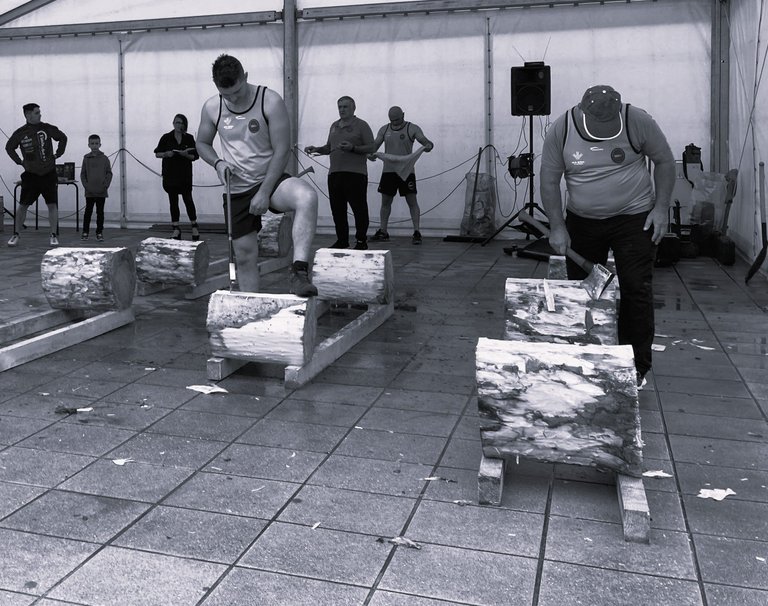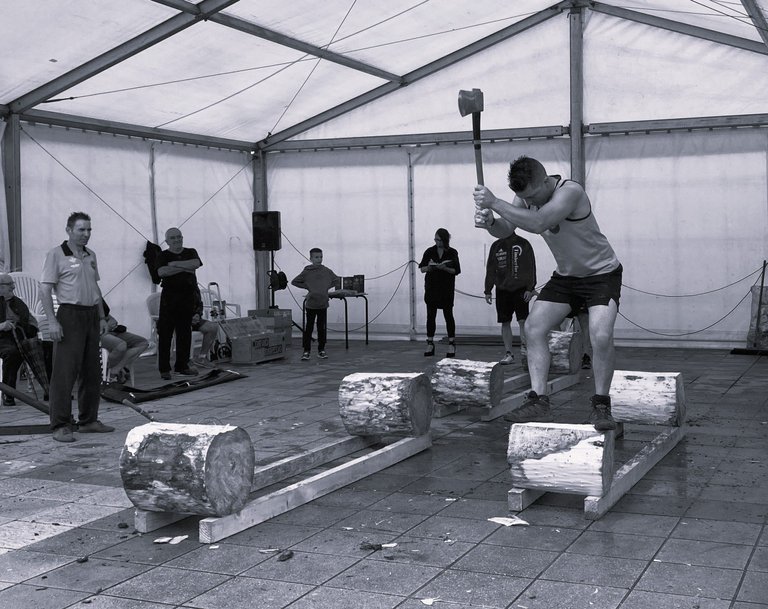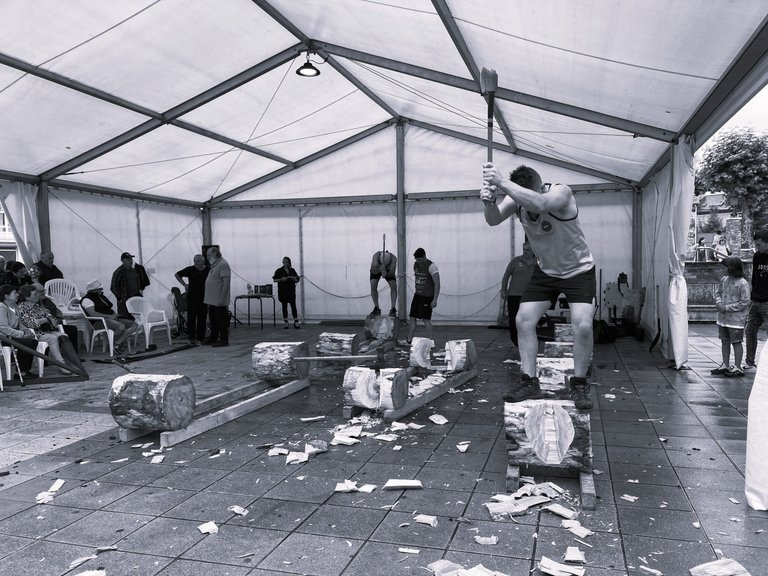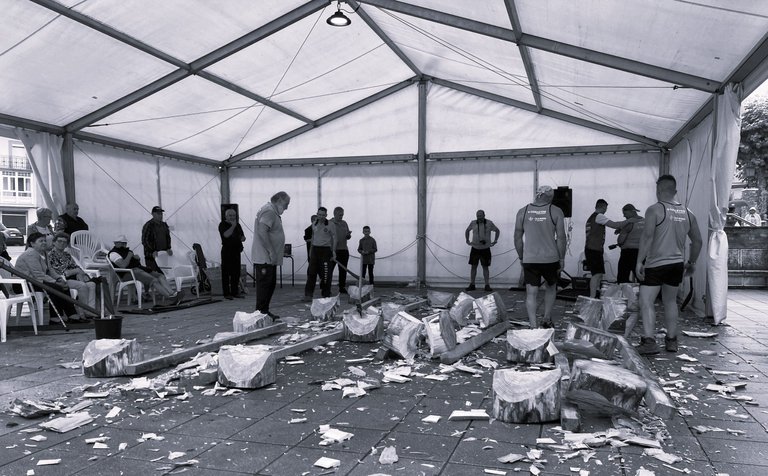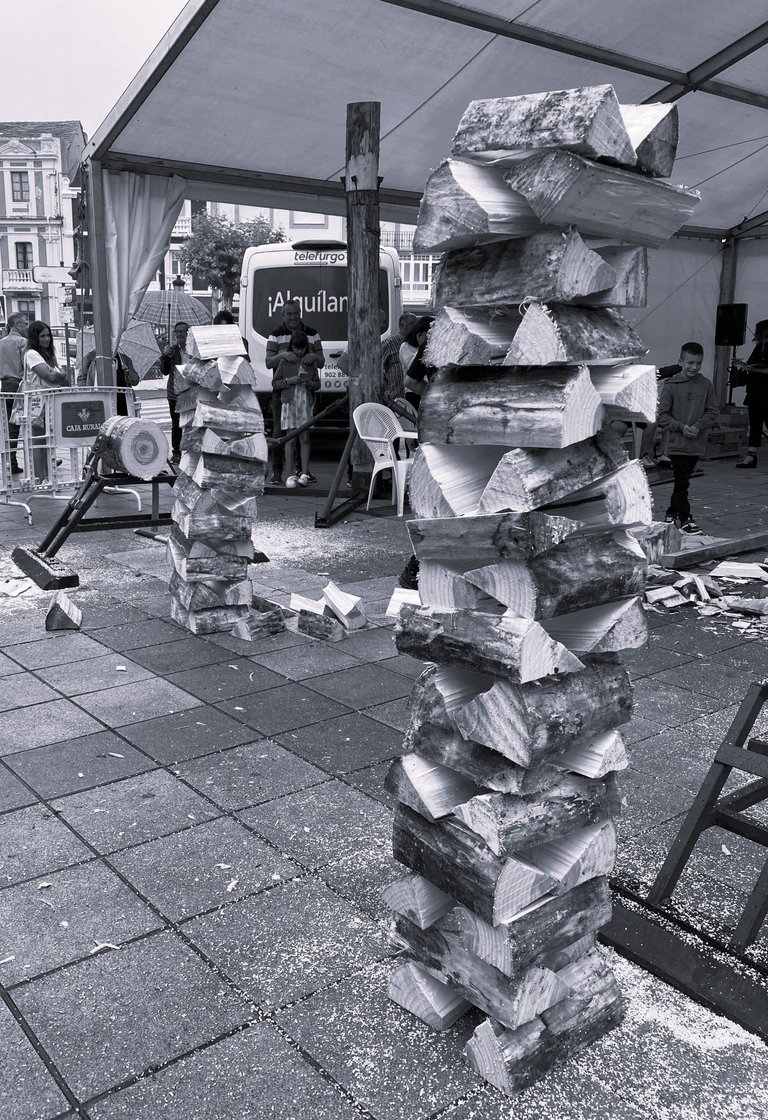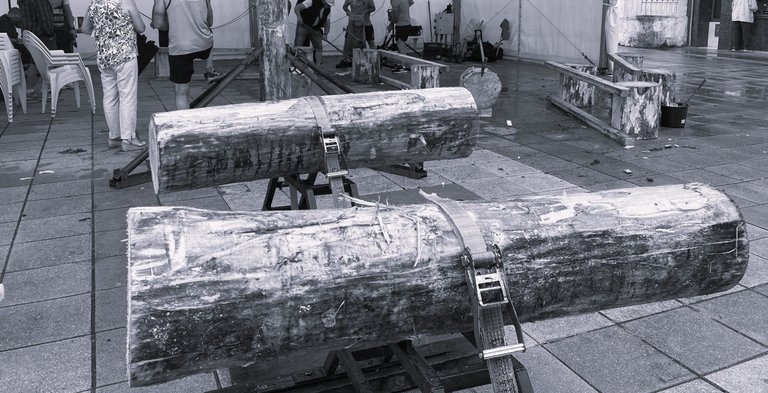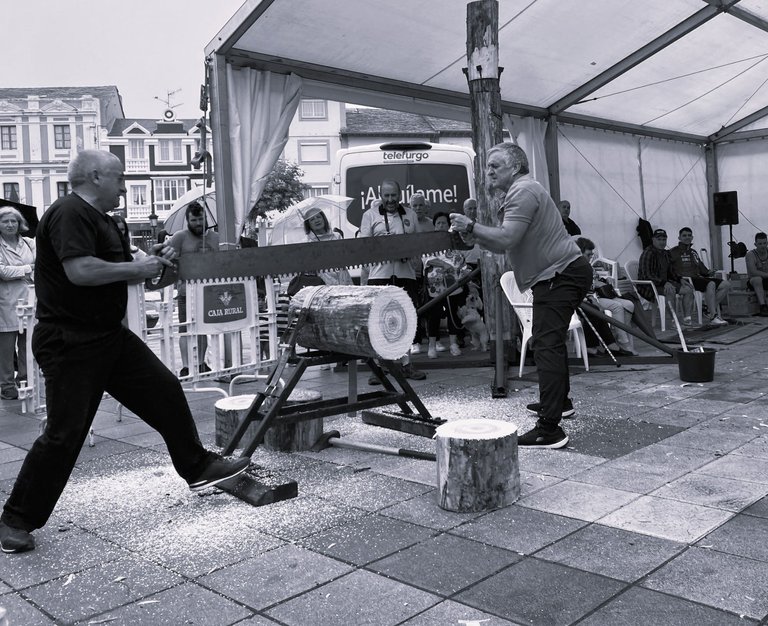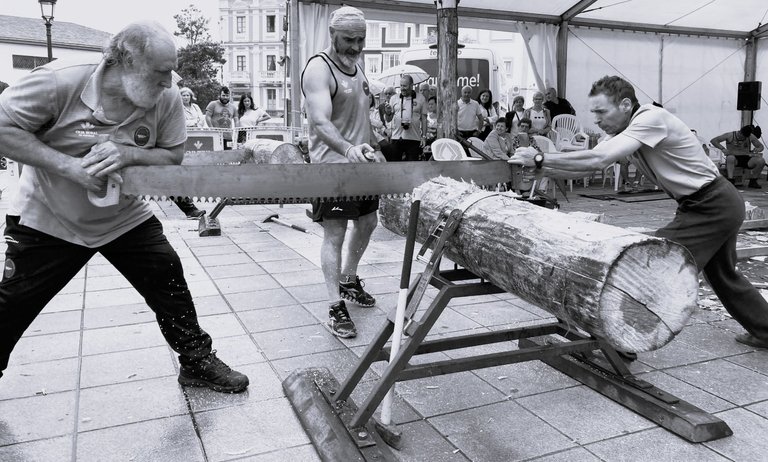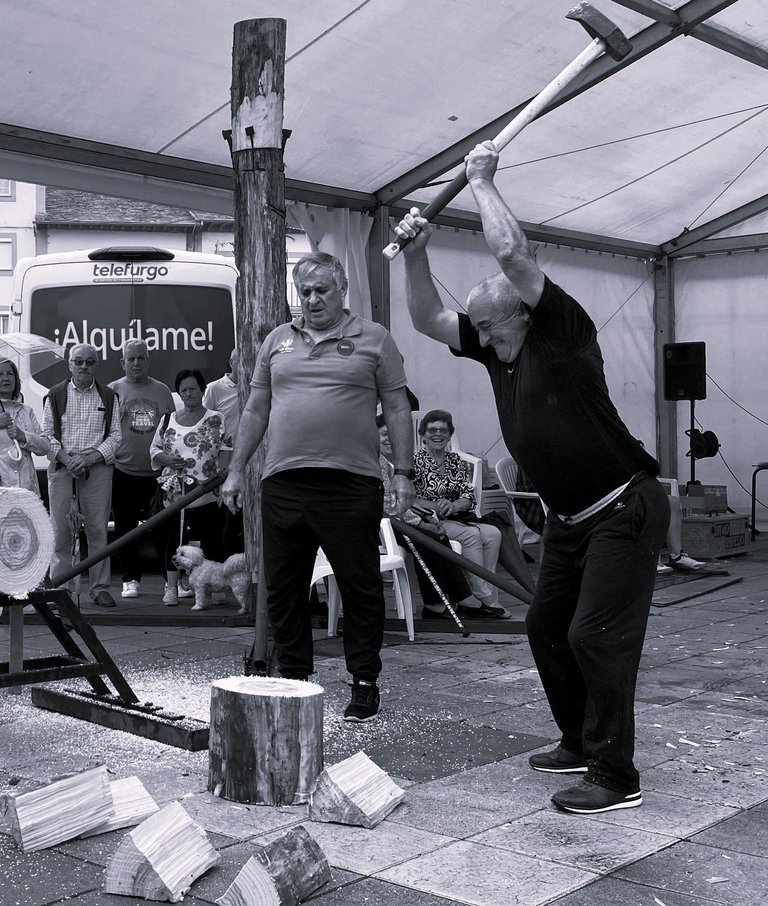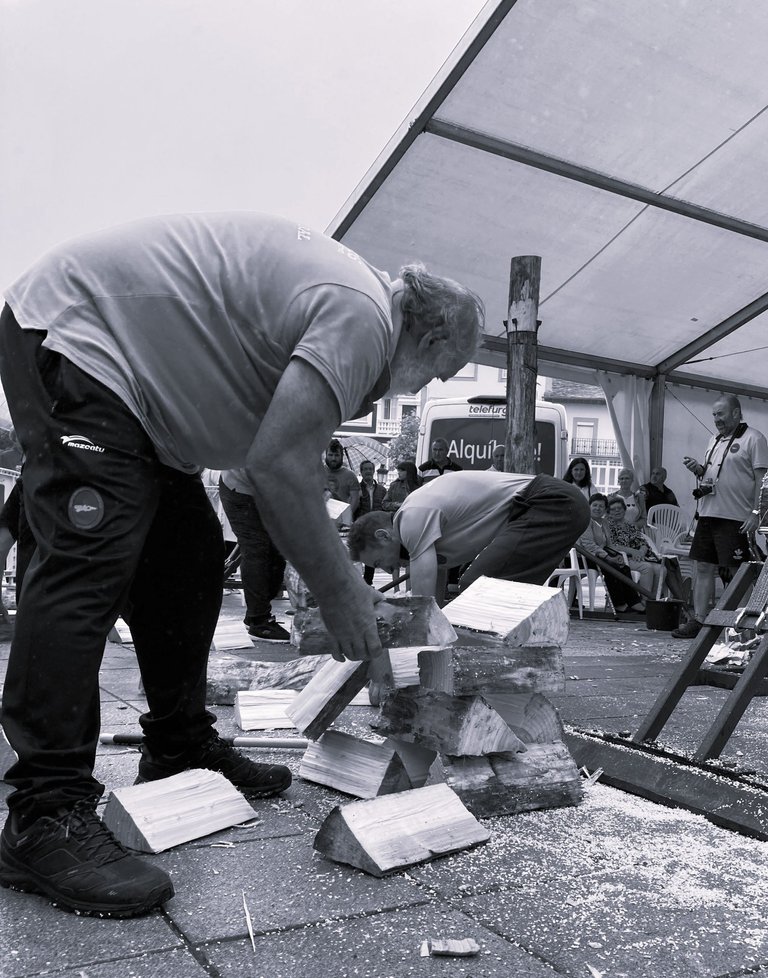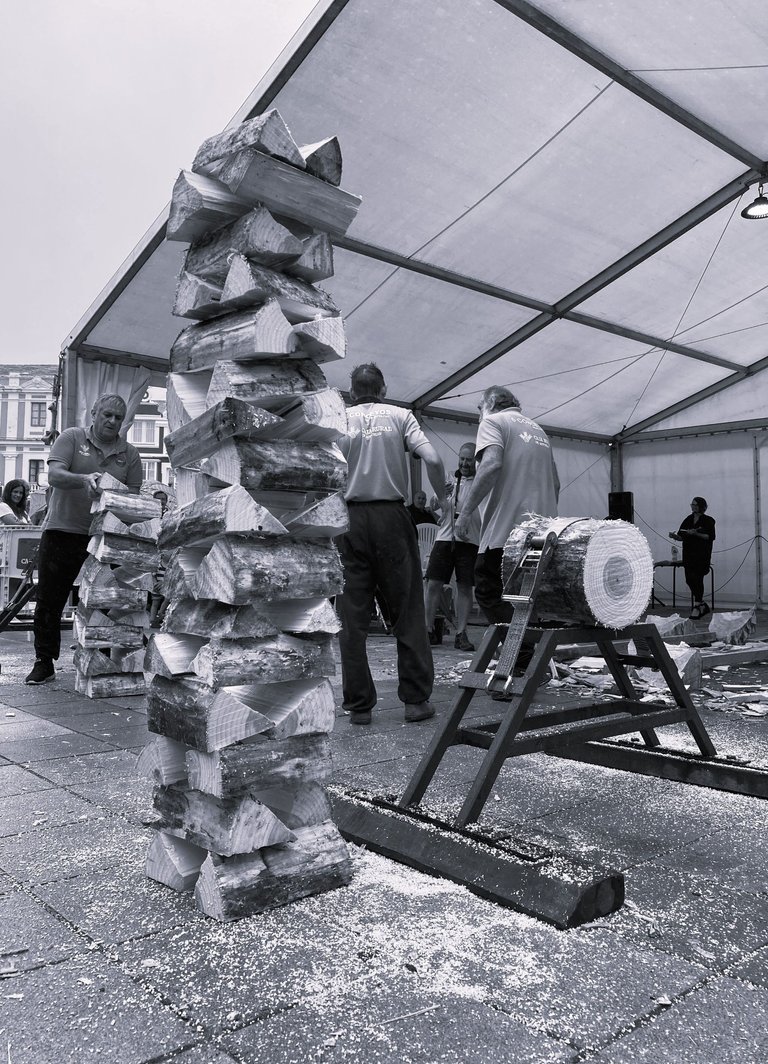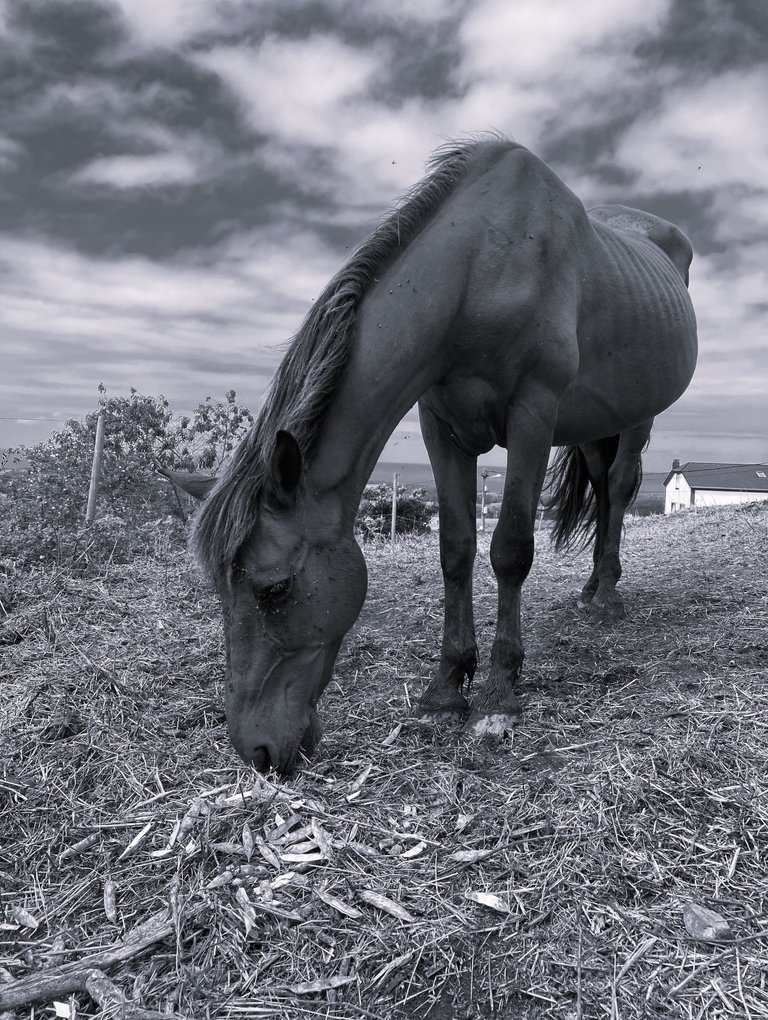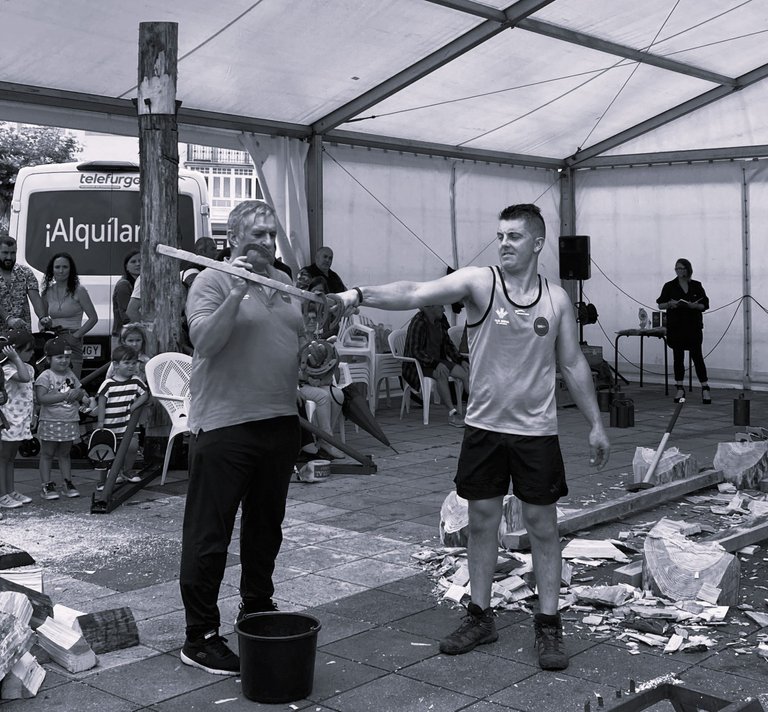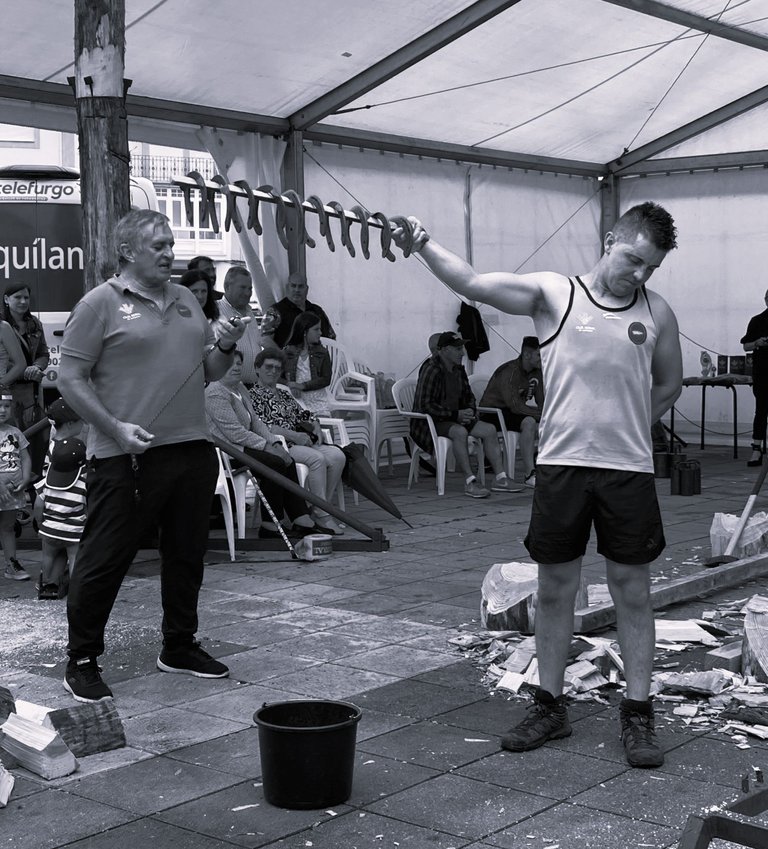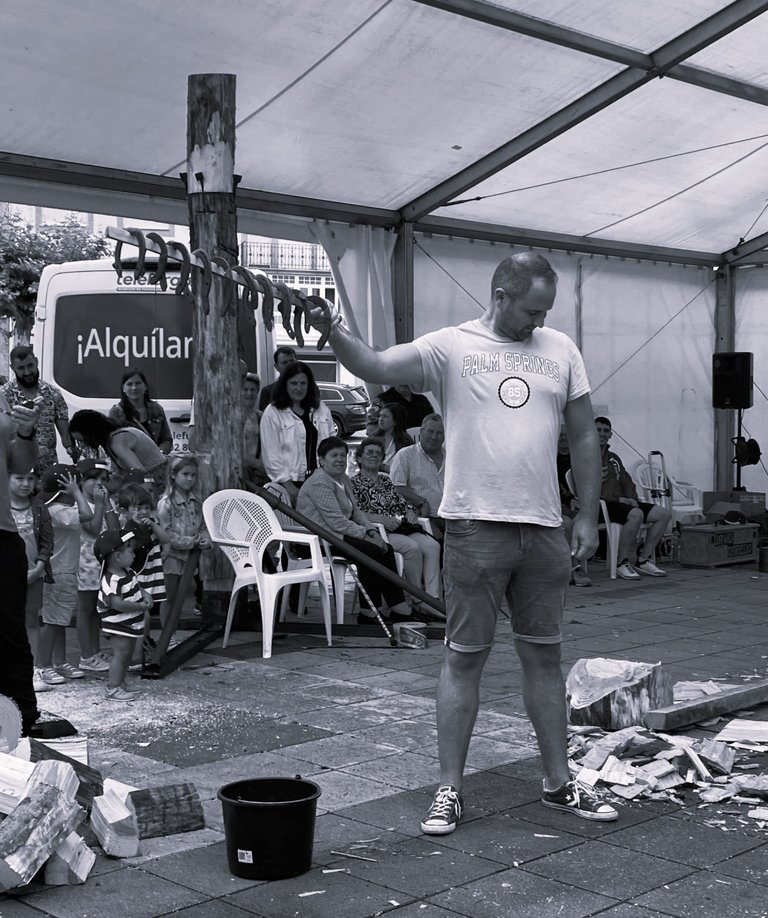Long before the arrival of the internet and the invention of popular sports such as soccer, baseball or basketball in the villages of Asturias for entertainment and in turn in order to prepare firewood for the winter, a series of popular games were developed that I call Asturian popular sports.
Log splitting
It is well known that before the arrival of heating, the best way to heat the houses was with wood stoves, generally from local trees such as oak or pine.
Older people say that the only entertainment they had, since they did not yet have TV, was to be with friends chatting and on many occasions there was a competition to see who could split a big log into fewer axes.
In many occasions several friends would get together in their houses and the number of logs was not very high, so the competitions were made in relays to see who could cut 3 big logs in less axes.
And that is how this first popular Asturian sport was born and, as you can see, the result is a large amount of wood chips that can be used to maintain the fire in wood stoves.
The Castillete of 32 wood chips
The accumulation of firewood in a pile of 32 wood chips is known in Asturias as castillete, as long as 2 wood chips are stacked on each floor, thus forming a height of 16 floors.
In order to turn this type of work into a sport, many years ago a peculiar race was devised in which two teams formed by two people, each one must cut their own trunk.
But at the time of cutting it they must use a big saw and split the trunk into 8 pieces, being highly recommended to give stability to the pile that the trunks are as symmetrical as possible.
Once cut, each team, with the help of axes, cuts their 8 logs into 4 pieces each.
Once they have their 32 splinters, the construction of the castle begins, where it is very important that the construction is very stable from the base.
The winning team is the first one to build the trestle, and this one will last 10 seconds without collapsing.
Horseshoes
But it was not all fun making firewood, but in the houses there used to be horses to work the land and a couple of times a year they had to be properly shod with new horseshoes.
Over the years, there were many horseshoes in the houses and for this reason a sport or game arose that consisted of putting horseshoes on a stick that a person had to hold.
A total of 10 horseshoes were placed and, obviously, the winner was the one who could stand the longest without letting go of the stick or without the horseshoes falling off.
Some spontaneous disbelievers dared to play for the first time, but with much suffering they barely held on for a few seconds.
In conclusion, long live the Asturian sport and how without the need of screens one can entertain oneself in a healthy way and at the same time have firewood for the winter.
Best regards.
This is my entry to #monomad challenge organized by @monochromes and my entry to PhotoFeed-Street Photografphy organized by @photofeed.
